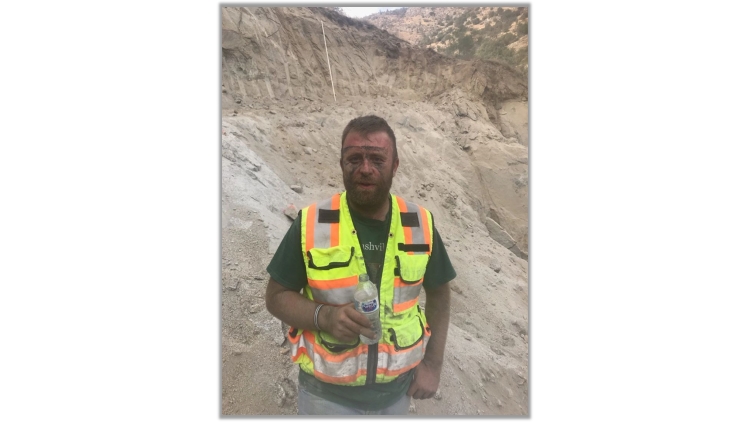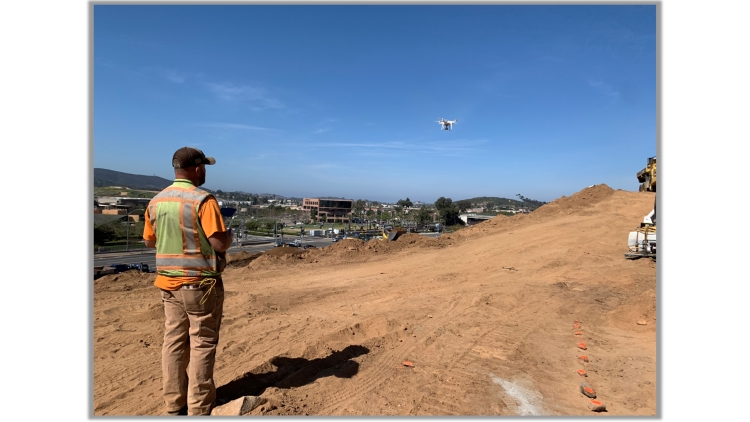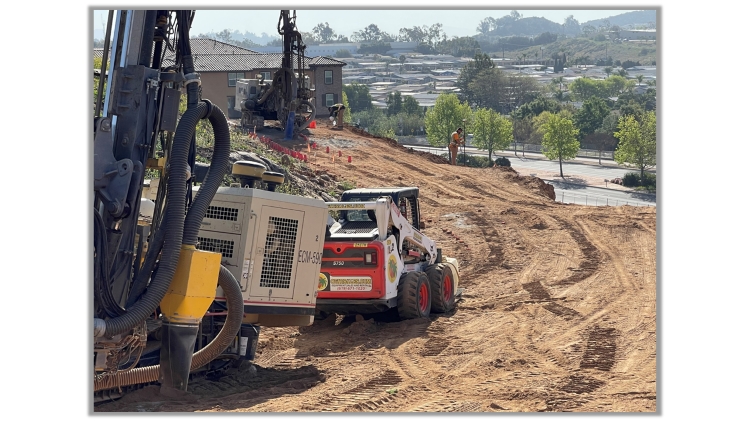Customer Spotlight: Petra Drill & Blast and the Importance of Data in Drilling
Petra Drill & Blast's Nick Cunningham has alot to say about the Importance of Data in Drilling Operations and Ultimately it's Impact on Drill & Blast operations in quarrying, mining, and construction.
In 2018 Petra Drilling and Blasting was founded with the slogan, “building relationships through innovation and service.” Ever Since then Nick Cunningham, VP of Operations, and his team have explored and embraced the latest and greatest technologies to ensure they always provided their customers with the best service they could. They’ve used technology to be able to make quality guarantees their competitors simply can’t.
“When you start a company, more often than not, there's no employees. It's just you and a couple of people and so the VP of Operations is initially what I've jokingly called a fancy title for the head bottle washer. Which in the drilling and blasting world means the driller, the blaster, the face profiler, the mechanic, the reporter, the the estimator and all of those things.
Early on its long long hours, but now after 6 years and more staff, now I've been able to kind of pull back a little bit from the day to day, out there running the equipment and have been able to focus on what what my real passion is, which is data collection, data management, staying on the leading edge, technology, sales.”

While Petra Drilling and Blasting is a total rock management team, from mines and quarries to construction, Nick has a particular interest in construction blasting in particular the very precise blasting often required for it.
“Construction blasting offers a different set of challenges. I really enjoy the blasting. I just recently did a project where I was blasting 50 feet from inhabited structures. So basically these people are at home and it's 50 feet from the nearest hole. And so that's really exciting and it's really fun to have to to to do quality control to up to that level.”
And what makes that kind of blasting feasible? Technology. Nick believes the reason we’ve been able to see such an evolution in the industry towards newer and better technology lies in the people.
“The biggest driving force of the evolution of the industry has been the folks that are capable of latching on to the technology and moving forward with the industry rather than rather than pushing back against it and just saying, well, you know, I didn't sign up to be a driller for this.”
Technology is important because it allows for the collection and utilization of Data.
He points out two main reasons for the adoption of technology. The first, is less optimistic but no less real: lawsuits.
“We live in a litigious society. There are countless examples of litigation, more often than not, it ends up being determined by good data collection management, good best practices, and things like that.
In many cases it actually ends up being pre-litigious activity. So, for example, you have a homeowner that's nearby that retains an attorney. And it's very, very commonplace. That we or that someone in our company or within the consulting realm of people that work with us are dealing with attorneys.”
The second main reason for the adoption of technology is efficiency and optimization, or saving and making time and money. And what do you need to optimize operations? Data.
“We realize that we can do things better and more often than not, that's accomplished by looking at the information. You collect information, you look at the information, and then you create repeatability.”

Where has Nick seen effective data management really helping cut costs, increase efficiency and optimizing operations? Drilling.
“I started collecting information on drilling because it's probably a third and sometimes up to about a half of the cost of the whole drill and blast operation. So I started collecting data off of the drill logs. In the beginning they were paper handwritten drill logs. They were messy. They were hard to read. They sometimes had grease on them or Taco Bell or whatever. And I started collecting information. And at that at that time, the company was averaging about 360 feet per day, per drill day.
At first, I didn't tell anybody I was looking at it. In about a month, I was able to sit down with a couple of drillers to discuss perfomance. And in just a couple of months, I improved from roughly about 360 feet per day to little over 400 now. That's 10 percent.
In six months I had given all the drillers the opportunity to be coached to learn how to do their job a little bit better and a little bit more productively. I eliminated some of the poorer accounts that were either under underutilizing equipment or just couldn't get the type of production that you needed. And by the end of the year, we were over six hundred and thirty feet per drill day.
And in this company, they had a pretty sizable fleet of drills of which I was overseeing. So this was probably tens of thousands of dollars per month in efficiency increase. And that's just through collecting and looking at data.”
How Strayos is changing the Industry.
“Using drill reporting as an example, most of us out in the industry that are utilizing technology are trying to use multiple programs. So we're taking information from one program and then dumping into another program and then we're taking that information and then dumping it to another program. And it's not neat. It's not just copy and paste. A lot of it requires some actual hard input. And its just riddled with error."
Nick’s favorite tool? The Strayos Fielder Digital Drill Log App
“Before we had the Strayos Fielder App we had miles of useless incomplete paperwork stuffed into files at best and in the worst case scenario never turned in or reviewed at all, no real time updates, blaster’s showing up to sites completely clueless of ground conditions, completion status, etc.
After we got the Fielder App we saw 3 big improvements immediately.
1. Safety. the number one thing we need is safety if there was an absolute number one instance where safety was paramount it is blasting safety. I often tell laypeople, blasting is basically taking billions of horsepower (explosives) and applying it to a mostly unknown container (geology) then hoping everything turns out fine. The first step in knowing the container is getting good drill data back from the field in real time (or very near depending on connectivity).
2. Fact based decision making. the ability to quickly grab data in a spreadsheet and sort by date, time, driller, drill, site, and shot number makes a forensic study of any of KPI such as drill production, drill utilization, employee efficiency, tool usage, and more that used to take hours of data collection, input, manipulation…now takes minutes. This provides fact based input on things such as account performance, employee performance, equipment performance including reviews and incentives, staffing needs, repair and maintenance needs, and more.
3. Near real time updates. (only slowed by connectivity and/or synching lag) allow us to make better decisions on blast scheduling, ultimately affecting blast crew efficiency, and costs not even typically associated with drilling directly. Everyone has been on a pattern waiting for a drill to drill the last hole or the last few holes it is wildly inefficient, and this problem has always been compounded by a driller that is incommunicado because he or she is busy drilling, out of cell service, or in some other way hindered from communicating. Strayos fielder nearly eliminates the need to “Talk” to the driller.
Nick’s favorite shot? 50 feet from an inhabited structure.
“I had to do some blasting within about 50 feet of occupied residences and there were a couple things that made that probably one of my favorite projects. One thing was, was it had pre-split work that also came within about 50 feet of residents and pre-split work is typically more violent and typically much higher air overpressure than your traditional blast. And it's also, I wouldn't say less predictable, other than the fact that air overpressure is, as a rule, less predictable.
And so doing this project and being able to do this pre-split work and being able to do these blasts that were this close to residences, several fairly close utilities, and a rail line close within the area of influence.
But it's the nature of the beast. And it poses a great kind of challenge. So I can design it, it's not going to hit the 50 foot away house with rock. That's fairly easy, that part of it. But how am I going to design a blast that allows me to not crack their dry wall or spur a bunch of complaints or exceed some vibration limitation.
And even in my world of blasting, I have never stood 50 feet away from a blast that I set off. I'll never forget standing there and and knowing that it was good, knowing that I was safe, knowing that I was protecting these homes that were occupied. But still, I'm standing 50 feet away. And I'm in essence, standing out in the open because I have my truck there that I can duck behind but I don't have a blast shelter.
And the reason why I don't have a blast shelter is because these people that live here, they don't have a blast shelter. So there's no possible way to connect me, me having one, and the people that are standing there in their living rooms not having one.
So definitely that shot that was that closest in one, the one that came right up to the edge of that project was no doubt my favorite blast that I've done up to date.

Why Nick Chose Strayos.
Why did Nick choose Strayos over all the other solutions out there?
"Its a holistic platform, integrating and analyzing data from drilling, blasting, and surveying, that can be used in mining, quarrying or construction. That data is fed into a system designed to be user-friendly and its automation not only makes the job easier but also reduces the risk of human error.
Strayos has tools for each step in the process, it connects the dots between these steps, it's changing things drastically.”
Nick’s favorite thing’s about Strayos? Solving real world problems.
I'm actually glad that I've teamed up with Strayos, because the prioritizing obviously comes with going out in the field, talking to people and finding out where their pitfalls are. Customer feedback is absolutely, absolutely critical in designing a product that people want to use.
My favorite experience with Strayos is sitting down with a team of people that are engaged and interested in hearing about how can we do this better? What's the next step look like? we can get together and we can figure out the real solutions. That would definitely be my and Strayos' strong suit.
Nick’s advice to his fellow drillers and blasters.
“You have to you have to take the leap, there's no lukewarm approach to this. What I would say is, find your key personnel, take good care of your key personnel invest in training them, invest the time in them to get them to where they're working with this new technology and utilizing it to its maximum potential.”
and
“It’s 2024, paper documents are just about a thing of the past and rightly so. It’s worse if you are not collecting drill data you are putting yourself, your employees, and our entire industry at undue risk. If you would like to establish a drill data collection process or streamline your drill data collection and management Strayos is absolutely the easiest and fastest way I have seen.”

Check out our 2 Free E-books on AI applications for the drilling, blasting, and mining industries to see all the amazing advances that are available.
AI Guide for Drilling and Blasting
AI Guide for Mining
TLDR? Watch our videos instead:
YouTube
Follow us on:
Facebook
X (Twitter)
LinkedIn

